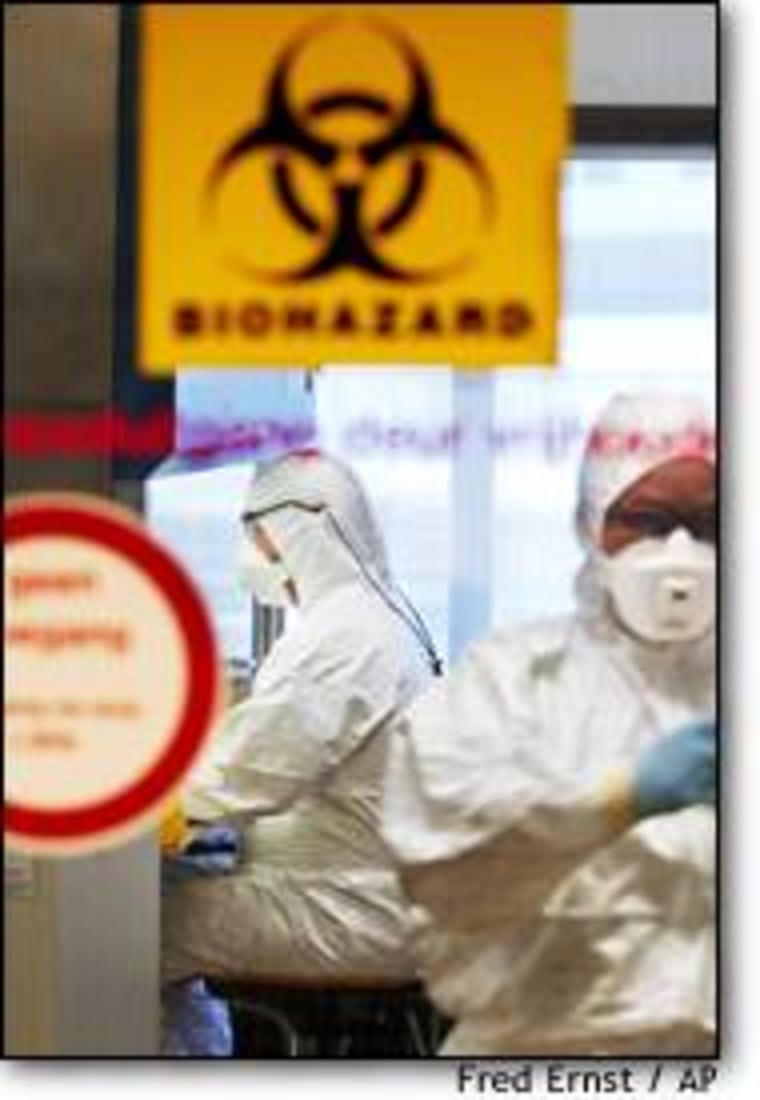While much is still not known about SARS, or severe acute respiratory syndrome, scientists have been able to provide answers to questions many people are asking about the deadly illness. Below are some responses provided by the U.S. Centers for Disease Control and Prevention and the World Health Organization.
Q: How is SARS spread?
A: The primary way appears to be close person-to-person contact. Most cases have involved people who cared for, lived with or had close contact with a SARS victim.
Touching the skin of a SARS victim, or even the droplets from a cough or sneeze, and then touching your eyes, nose, or mouth can transmit the virus. The CDC says it’s also possible that SARS can be spread more broadly through the air or by other ways that are currently not known.
In Toronto, Canada, where 15 people have died, hospital staff in SARS wards are now wearing double gloves and full face shields as concerns grow that the protective gear used previously did not guard them sufficiently.
Q: How long is a person with SARS infectious? A:
Information to date suggests that people are most likely to be infectious when they have symptoms, such as fever or cough. It is not known if a person is infectious before symptoms show up.
How long, or even whether, a person is infectious after symptoms have cleared up is also not known. But studies by Hong Kong researchers showed the SARS virus can survive for at least 24 hours on a surface coughed on or touched by a victim, longer than the three hours some had previously thought.
Q: What are SARS symptoms and signs? A:
It usually begins with a fever greater than 100.4F. That is sometimes associated with chills, headache, general feeling of discomfort and/or body aches. Some people also experience mild respiratory symptoms at the outset.
After two to seven days, SARS patients might develop a dry cough that increases in severity. Significant lung congestion and a lack of oxygen to one’s blood can follow.
Q: If I were exposed to SARS, how long would it take for me to become sick? A:
The incubation period is typically two to seven days, but isolated reports have suggested a period as long as 10 days.
Q: What’s the mortality rate for SARS? A:
CDC estimated it at about 3 percent, which is much lower than other infectious diseases, but recent reports from Hong Kong and Singapore suggest it might get as high as 10 percent.
Q: What’s the treatment for SARS? A:
There is still no cure, so for now suspected carriers are confined to special hospital wards. Some patients have responded well to antiviral medications and steroids. On April 4, President Bush signed an executive order authorizing the quarantine of anyone in the United States suspected of carrying SARS.
Q: What causes SARS? A:
Scientists have detected in SARS patients a previously unrecognized coronavirus, which is a type of virus with a halo or crown-like appearance when viewed under a microscope.
This new coronavirus is the leading hypothesis for the cause of SARS, but other viruses are also under investigation.
Coronaviruses are a common cause of mild to moderate upper-respiratory illness in humans.
Q: How did SARS begin? A:
The WHO says the disease originated in China’s southern province of Guangdong before spreading to Hong Kong, where it was carried around the world by air travelers.
Q: Is there a SARS test? A:
Not yet, but scientists have developed two promising tests for detecting antibodies to the new coronavirus.
Q: What’s my risk if I’m on a plane or boat with a suspected SARS victim? A:
SARS has occurred among air travelers — primarily to and from Hong Kong, Hanoi, Singapore, and mainland China — but most cases are primarily among people who have had direct close contact with an infected person.
The CDC does not currently recommend that healthy travelers be restricted in the event that another passenger or crew member is suspected of having SARS.
Q: What should I do if I recently traveled to an area with a high SARS rate?
A:
The CDC advises monitoring your own health for 10 days following your return, consulting a doctor if you become ill with a fever of more than 100.4F that is accompanied by a cough or difficulty breathing or that progresses to a cough and/or difficulty breathing.
Q: Where can I get more information? A:
Both the CDC and WHO have created SARS Web sites at and .
The Associated Press and Reuters contributed to this report.
